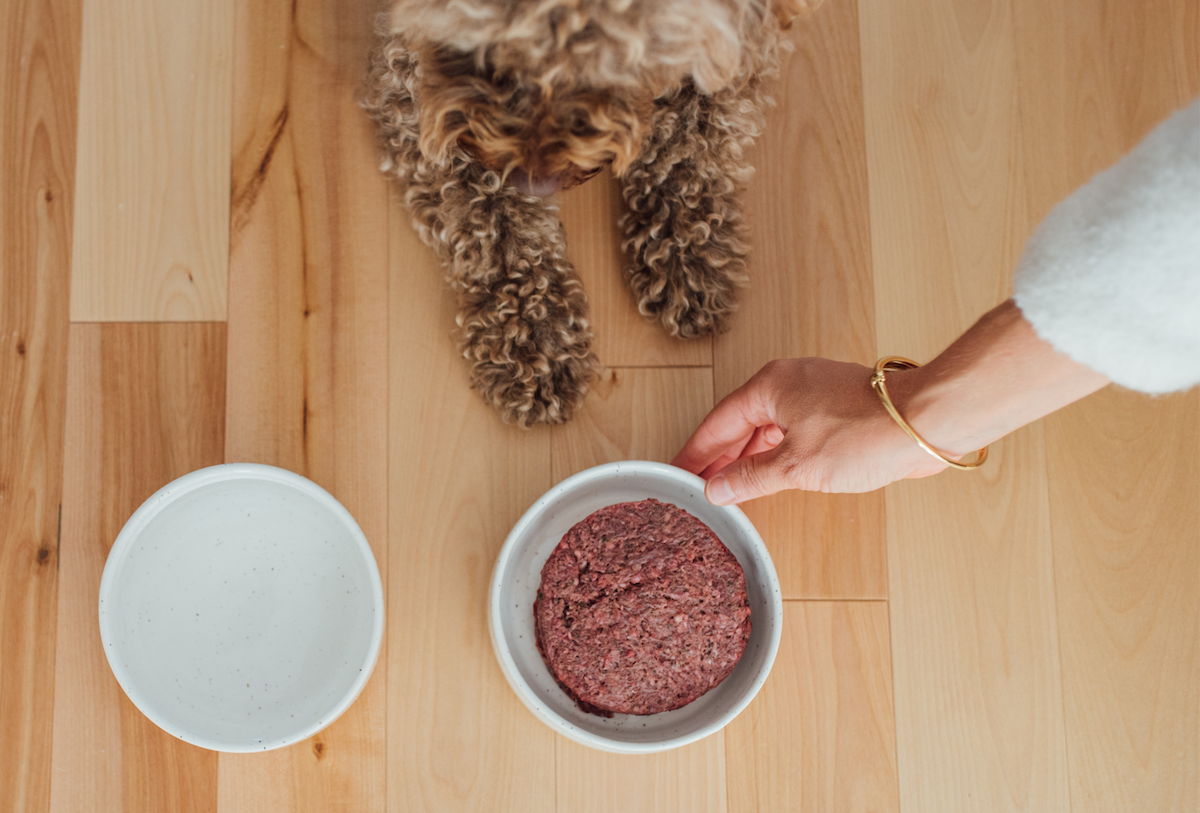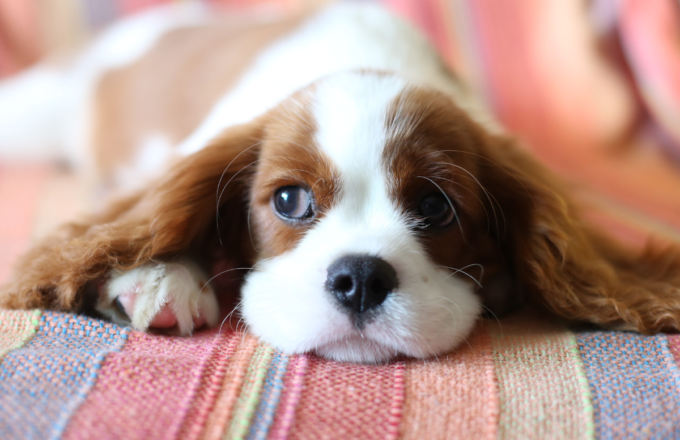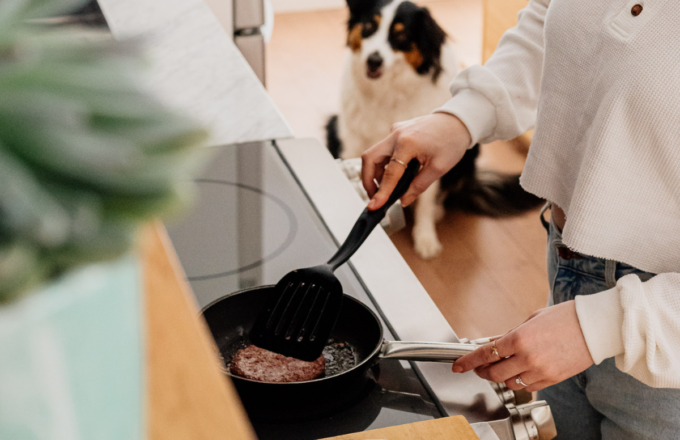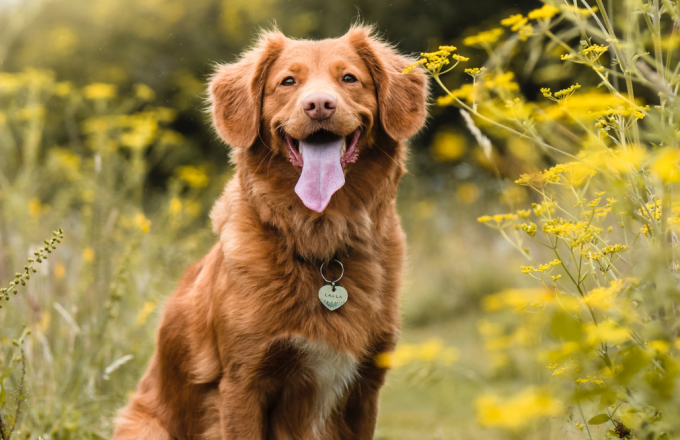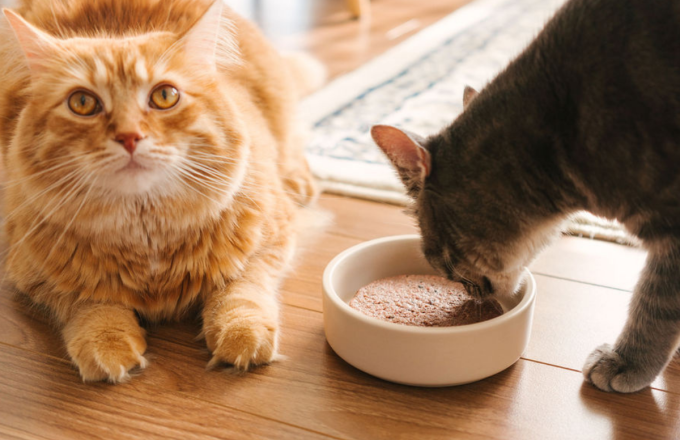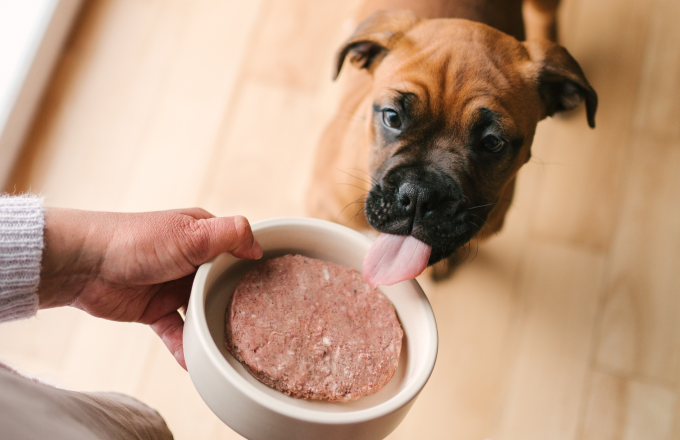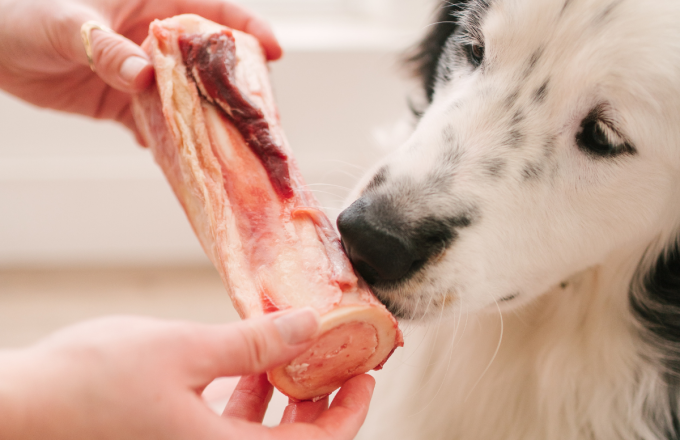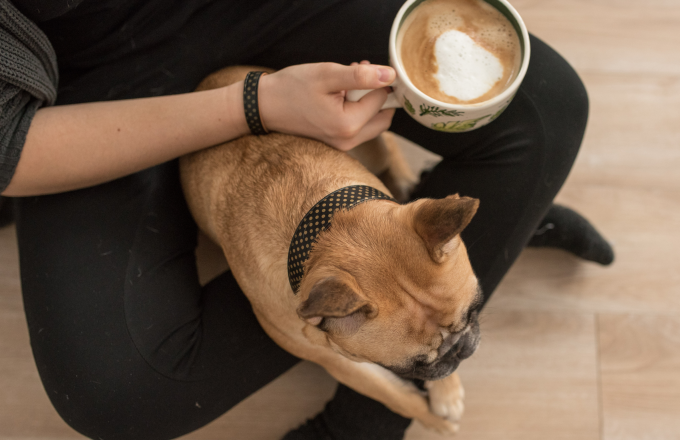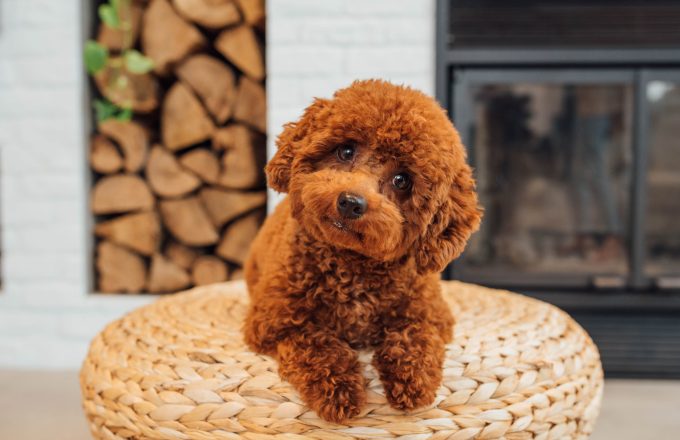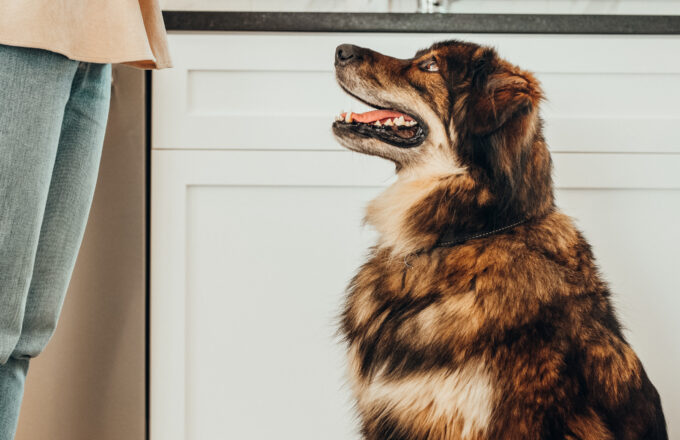Choosing your dog’s bowl
Among the essentials for your canine companion, you’ll find a leash, bed, toys… and food bowls, of course. These absolutely can’t be forgotten for feeding purposes but also for health purposes. How do you choose the best option when faced with so many choices? It’s important to question the integrity of every material by weighing its pros and cons. Here we look at materials, sizes, and the needs of your pet.
Why it’s important to wash your dog’s bowl
No matter what it’s made of, it’s important to clean your dog’s food and water bowls thoroughly. If you’ve ever touched the inside of the bowl, you’ve no doubt smelled a gooey substance. It’s called biofilm, a collection of bacterial cells coated in a polymeric matrix that attach to a surface. Several bacteria can hide there, such as Listeria, E. coli, and Legionella, and they reproduce quickly. Biofilm can also cause urinary tract, bladder, and ear infections.
Every pet owner should wash their dog’s food bowl with warm, soapy water after each meal to avoid contamination. Placing it in the dishwasher every so often also does it a world of good.
Water bowls should be wiped down before receiving fresh water. Many pet owners will repeatedly refill their dog’s bowl without washing it first. This is how the biofilm develops. Water bowls don’t need to be washed daily, but that’s not to say it shouldn’t be done frequently. They should be washed and dried every few days.
Types of bowls
From ceramic to stainless steel to plastic, you’ll find dog bowls in a variety of materials. This can complicate your purchase, especially since each bowl has its own characteristics and advantages.
Discover Our Products for Dogs
The plastic bowl
An inexpensive option, plastic bowls are accessible and available in all shapes, colours, and sizes. The plastic bowl is the most versatile, plus it doesn’t break when dropped. It’s convenient and light, meaning you can travel with it, though it’s often bulky.
Over time, scratches may appear in the plastic, which gives bacteria a place to live. Unfortunately, even with a wash, the bacteria will likely remain there. Therefore, plastic bowls need to be replaced often. These scratches appear over time due to wear and tear, exposure to teeth, and clawing.
Some animals may also develop an allergy to plastic, which can cause a mild reaction on the skin of the chin or face. Be careful, some bowls can emit BPA, which can pose danger to your dog as the compound seeps into the food.
The stainless steel bowl
A great option for your dog, this bowl is extremely durable and virtually unbreakable. However, it may not be the most aesthetically pleasing. It’s not offered in many colours or designs. However, the bowl is inexpensive and pays for itself very quickly. Because it’s lightweight, it may not work well for dogs that enjoy toting their dishes.
Although it’s durable and nearly unbreakable, it’s important to take care of it and wash it. Stainless steel is dishwasher safe. If you opt for a stainless steel bowl, choose a model without rubber to maximize its longevity.
The ceramic bowl
Because they’re heavy, ceramic bowls are great for dogs who walk with their bowls. They’re BPA free and come in a huge variety of colours and designs. These are the best choice if you want bowls that match your decor. A varnish finish can make a ceramic dog bowl easy to wash and dishwasher friendly.
It’s important to inspect your bowl regularly for cracks and chips. If you find any, however small, the bowl should be replaced. This material is definitely very fragile and rarely withstands a shock. Obviously, these bowls don’t travel well. As a result, you should have a backup bowl for your adventures.
The stoneware bowl
Stoneware bowls have the same characteristics as ceramic bowls. They’re heavy and easily breakable. Pay attention to the finishing varnish. It should be glossy and waterproof so that the sandstone doesn’t retain the biofilm. Make sure your stoneware bowl is dishwasher safe. It’s important to check regularly for cracks and peeling.
The glass bowl
Small cousin of stoneware and ceramic bowls, it holds similar pros and cons. Be aware if you’re using these outside. The sun’s rays will hone in on one area, which can create fires on wooden balconies. They also get hot very quickly.
The automatic bowl
Automatic dog bowls are normally made of plastic, so they’ll likely have the characteristics of this type of material. With automatic bowls, your dog has access to their food at all times, which can be useful for pet parents who spend a lot of time away. That said, it’s not necessarily recommended to leave your dog with food at all times, unlike water.
The automatic bowl may be a good option for your dog’s water bowl, but not for food. It’s best to feed your dog yourself to maintain a good relationship with them and have control over their weight and health. In addition, automatic bowls are often more difficult to wash.
The silicone collapsible bowl
Collapsible bowls are made of silicone and available in many shapes and sizes. Silicone transport bowls are fuss-free and practical because they collapse and can be stuffed in your luggage while you travel. They’re inexpensive yet sturdier than traditional bowls.
They’re often equipped with clips, so you can hang them on your bag or belt. These bowls are dishwasher safe. Be aware that dogs can easily break or puncture them with their teeth.
The interactive bowl
Does your dog eat too quickly? If so, the interactive dog bowl is for you. They’re designed to stimulate your dog mentally. Plus, they encourage your dog to eat at a slower pace. These bowls are often made of BPA-free plastic.
Its edges are high and it’s available in many structures, which can help your dog eat smaller amounts of food at a time. This saves them from experiencing digestive problems such as excessive gas and vomiting. It also keeps your dog happy and sated after eating.
Finding the right size
Aside from the bowl’s material, it’s important to consider its size. For large dogs, it’s recommended that you raise the bowl to help your dog digest properly and avoid gastrointestinal problems. Several models are available on the market. You can get them in wood, plastic, or metal.
Normally, these structures come with bowls. These can be stainless steel, plastic, or ceramic depending on the type of dog bowl stand. It’s even possible to make a DIY structure at home. Opting for raised dog bowls also helps keep your space clean because it’s harder to drag the structure.
You’re now well equipped to make an informed choice about your dog’s bowls, for everyday use and travel purposes. Whatever you choose, it’s important to wash them in order to keep your dog healthy!

